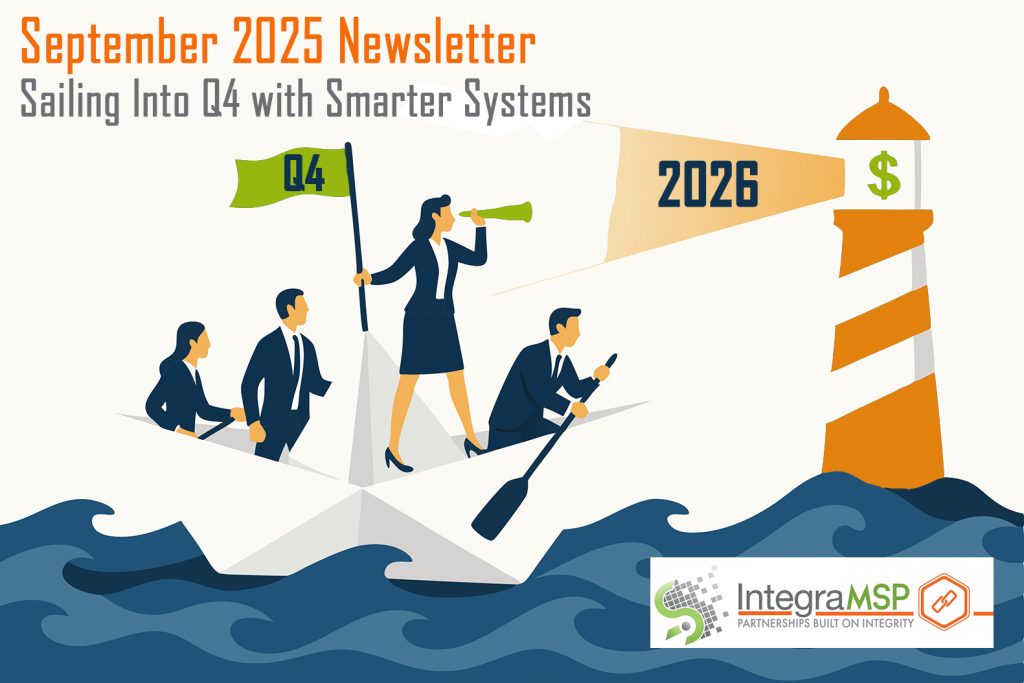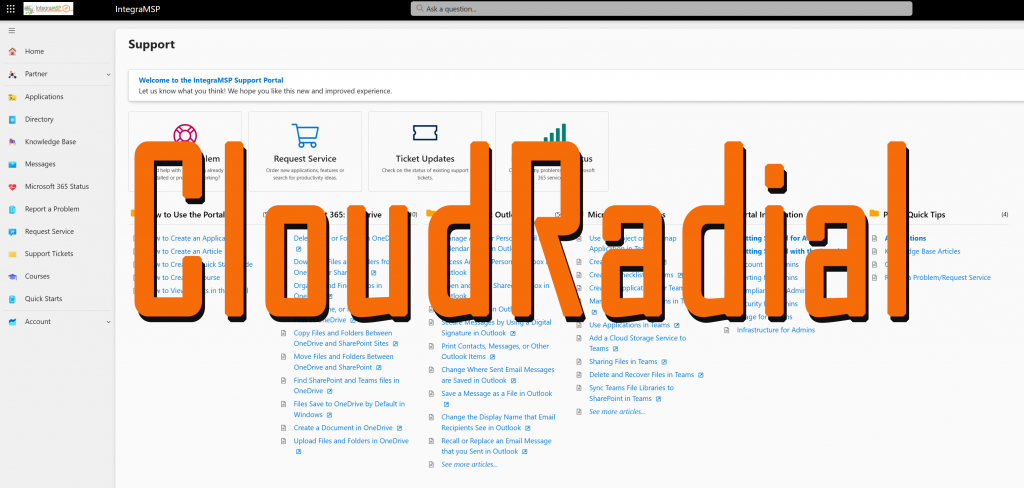Last month, we set the stage with Sailing Into Q4, a reminder that September is when smart businesses stop reacting and start steering. Budgets, systems, and strategy don’t just happen — they’re charted.
Throughout September, we steered through a different theme each week: tariffs, Windows 10, automation, AI, and cybersecurity. Each stop along the way gave SMBs practical insights to budget smarter, streamline operations, and protect against rising risks. And with analytics tied to each step, businesses can measure the impact — not just hope for it.
Here’s how the month unfolded:
Week 1: The Calm Before the Budget
We opened September with a double focus: slowing down to see the big picture, and speeding up to get tactical.
In The Calm Before the Budget, we unpacked how tariffs, inflation, and hardware delays aren’t doom signals but planning signals. By locking in vendor pricing and auditing hardware now, SMBs can stabilize Q4 spend before it spirals. As we noted: “SMBs that start forecasting in September see an average of 17% steadier cash flow in Q1 the following year.”
Then we distilled those pressures into a one-minute must-read: Tariffs, Tech & Timing: Q4 Budget Prep in 60 Seconds. This quick primer showed how supply chain delays and cost creep directly impact device refresh cycles — and why SMBs need to time orders and budget adjustments before the year closes.
Why it matters for Q4 planning: early action means predictable costs, steadier cash flow, and no January surprises. And with analytics, SMBs can track procurement costs against forecasts to prove whether early planning paid off.
Week 2: Windows 10 Sunset — Your Final Boarding Call
The October 14, 2025, Windows 10 end-of-life deadline isn’t just a tech upgrade — it’s a budget-critical milestone. In Windows 10: Your Final Boarding Call, we showed how unsupported systems increase compliance risks, create security gaps, and rack up downtime costs. As we put it: “Tidy systems make tidy budgets. Don’t let old software surprise you next spring.”
To give SMBs a bigger-picture view, we also shared the Q4 Budgeting Essentials Guide, covering hardware refreshes, vendor contracts, inflation-proofing strategies, automation planning, and Windows 10 readiness — all with a built-in safety cushion. This guide made it clear: good budgeting isn’t just about cutting costs, it’s about planning for stability when surprises hit.
Why it matters for Q4 planning: pairing Windows 10 readiness with a broader budgeting framework ensures SMBs don’t just react to a deadline but use it as a pivot point for smarter resource allocation. With analytics, you can measure ROI by tracking reduced downtime, fewer support calls, and improved predictability in hardware and software costs.
Week 3: Automation for Recession-Proofing
Week 3 was all about cutting waste without cutting people. In Automation = Recession-Proofing Without Pink Slips, we made the case that automation protects both employees and budgets. As we put it: “Don’t hire five to do what tech can do in five minutes.”
We followed with The Automation Stack Audit, pinpointing three workflows ripe for automation — billing, onboarding, and reporting. Then in The Q4 Automation Playbook, we mapped five small automation wins that build into big cost savings.
Why it matters for Q4 planning: automation frees hours that can be tracked and monetized. With analytics dashboards, you can see reduced invoice cycles, faster onboarding, and time reclaimed from manual reporting — all measurable ROI.

Week 3 (Part 2): Keep It Practical, Not Hype-ical
AI dominated headlines this year, but hype doesn’t pay invoices. In Keep It Practical, Not Hype-ical, we stripped out the noise and focused on where AI already delivers ROI: chatbots reducing service loads, CRMs surfacing smarter insights, and reporting dashboards refreshing automatically.
Why it matters for Q4 planning: it’s easy to overspend on AI tools. Practical adoption — tracked with analytics — shows exactly where time is saved, service improved, or revenue increased, making it easier to defend the investment.
Week 4: Cybersecurity as a Budget Ally
Closing out the month, we tackled the myth that security drains resources. In Cybersecurity: From Cost Center to Budget Ally, we showed how stronger controls protect revenue and reduce costs. IBM reported the average global breach now costs $4.44 million — making prevention one of the best budget safeguards available.
To drive it home, we added Cyber Insurance: What SMBs Need to Know Before Renewal Season. This article laid out the new insurer requirements (MFA, backups, patching), why policies are being repriced, and how to prepare documentation that can lower premiums.
Why it matters for Q4 planning: insurance renewals are budget events, not paperwork. Analytics help SMBs show proof of compliance — MFA activations, patch cycles, and backup logs — turning security investments into insurance savings.
New Tool Spotlight: CloudRadial Rollout
We’re excited to roll out CloudRadial, a client portal that makes IT transparent and collaborative. With CloudRadial, you can:
- Submit and track tickets
- Access reports and analytics
- Review IT roadmaps, compliance documents, and training
- Collaborate with our team seamlessly
Clients can Log in here: CloudRadial Client Portal
This rollout means clients see the analytics we’ve been talking about all month — a direct window into performance, compliance, and planning.










